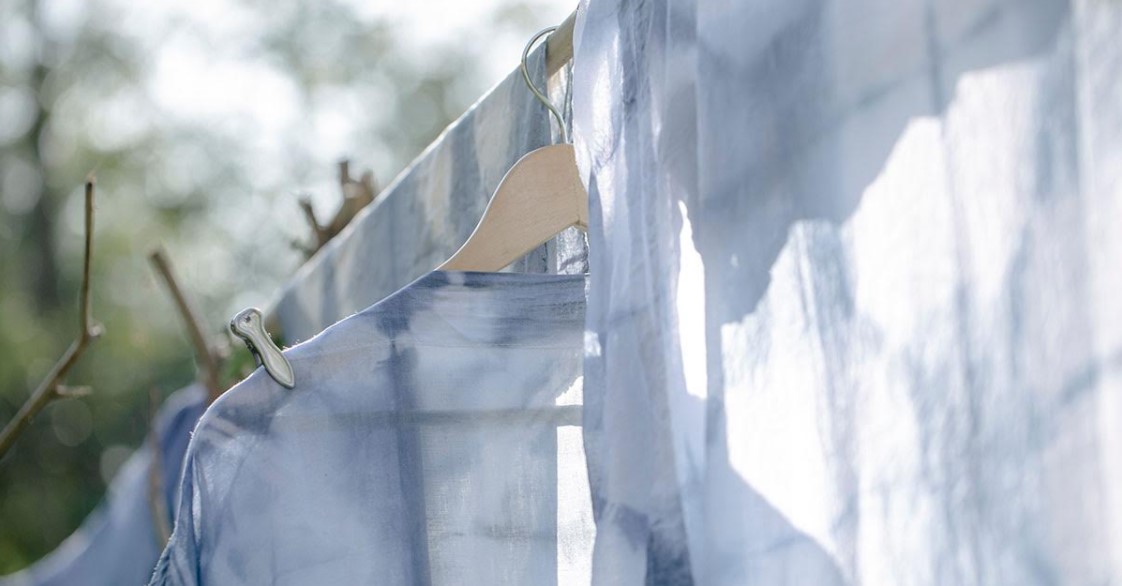What is dry cleaning? What do dry cleaners do?

When clothes are washed in the washing machine at home, water is used for cleaning them. However, many fabrics that cannot be washed with water. Wool, Silk and many other fabrics cannot handle water well and hence cannot be washed with it.
Some types of stains also cannot be cleaned and removed with water. Some fabrics shouldn’t be exposed to the heat of a traditional dryer. Such fabrics or stains need to be washed with solvents or chemicals other than water.
What is Dry cleaning?
The process of cleaning certain fabrics or getting rid of difficult stains without using water is known as dry cleaning. It is similar to regular home laundering but instead of water and detergent, a liquid solvent is used for cleaning the clothes.
Though the term dry cleaning can be misleading as the process is not actually dry, however, since the washing solvent contains little or no water it is termed as dry cleaning. No soap or water is used in the cleaning process.
The earliest solvent to be used was kerosene, however, due to its inflammable nature, it was discontinued. Dry cleaners then began using a solvent called perchloroethylene that is popularly known as perc. This solvent soon became an industry standard because of its effectiveness.
Very big and computer-controlled dry cleaning machines are used by dry cleaners to carry out the process. During the process, the clothes do get wet, but the liquid solvent evaporates faster than water.
Unlike the water in the washing machines, the solvent is not drained and disposed of during the cleaning process. The solvent passes through filters during the cleaning cycle to get rid of the impurities loosened during the cleaning process. After this, the solvent is distilled and completely purified before it can be used again.
What are the factors that determine if the clothes require Dry cleaning?
The 4 factors that determine whether a garment needs to be dry cleaned are:
- The types of stains on the garment
- The composition of the fibers in the fabric and garment construction
- The dye used in the fabric
- The types of trims, linings, embroidery etc. used in the garment.
There are many other factors that help determine whether a garment needs dry cleaning or a wet cleaning process. A professional dry cleaner like Sparkle Cleaners who are experienced can use their knowledge and judgment to determine which process will restore the garment to a “new” like condition.
The two main advantages of Dry cleaning over cleaning with water are:
- Water is known to swell the fibers which can cause shrinkage and dye fading in garments.
- The dry cleaning solvents are better and more effective in removing oily or greasy residues that are the base component of most stains.
The Dry cleaning process
1. Inspection and Tagging:
When a customer takes any garment to the dry cleaner, they examine the garment for any stains, tears, material quality etc. Once the garment is inspected, the dry cleaner then tags the garments to ensure they are not misplaced or to mention any special instructions if any.
2. Pre-spotting:
Once the garments are inspected and tagged, the cleaning process starts. During the pre-spotting process, the chemical solvent or heat is applied to the stains. This helps in the removal of the stain during the actual dry cleaning process.
3. Cleaning:
After the pre-spotting process, the garments are submerged into a non-water based solvent placed in the cleaning machine. The machine consists of a perforated cylinder where the clothes are rotated as the cleaning solvent is released steadily during the entire process. The clothes are rapidly spinning in the machine to get rid of any excess solvent. Warm air is further released in the process and the clothes are dried completely.
4. Post-spotting:
After the cleaning process, the dry cleaner re-inspects the garments for any remaining stains and residue. They remove these difficult stains by using the same process used in the pre-spotting stage.
5. Finishing:
The last step is the finishing stage. Once the garments have undergone the complete dry cleaning process, they are pressed, steamed and ironed. Below mentioned are the steps followed during the Finishing stage:
- Once the garments are properly cleaned, the dry cleaner “finishes” the garments using specialized finishing equipment.
- The finishing process generally involves steaming and pressing the garments. It may sometimes vary depending on the type and fabric of the garments being processed.
- Steaming helps in relaxing the wrinkles. It also enhances the cleaning by getting rid of any remaining water-soluble materials in the garment and killing all bacteria.
- Pressing is the last step in the process. During this step, the clothes are iron pressed producing crisp, smooth results that cannot be replicated at home with a hand iron. It requires great skills and training.
- After the garments are pressed, they are inspected for the last time before being packed for delivery.





